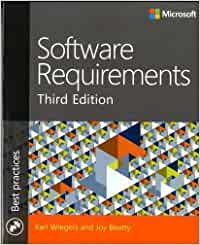Business analysts think and speak too often in technical terms – Interview with Rainer Wendt
In the meantime, the business analyst has also become established in German companies. At the interface between business and IT, the BA records the need for changes and translates them into technical solutions. So far, so good. But how should this role model be interpreted in digital times? What tasks does a BA perform in agile teams? And what is a serious problem of the profession?
Business analysts speak and think far too often in terms of technical solutions, says Rainer Wendt. We asked the entrepreneur, trainer and organiser of the European Business Analysis Day, an annual event in Frankfurt, Germany
Hello Rainer Wendt: Business analysis emphasises unambiguity – how do you define the term yourself?
Business analysis starts with the question of why. Why does a company need changes? Why this change now? It is about identifying business needs and deriving business requirements from them. These flow into the change strategy.
From the problem world we then move to the solution world. Together with the business and technical experts, possible options are evaluated, then decided upon and finally implemented. Business analysis is a holistic approach and involves both business and IT.
„Good business analysts speak the language of business and IT and interact with influential stakeholders.“
In concrete terms: When do I call a business analyst as a company? Where does he help me in the projects?
Ideally, a business analyst can analyse and evaluate problems and possible solutions without bias, as a kind of free thinker. He should never lose sight of the big goals, such as conformity to the corporate strategy, fit-for-purpose even in the future and profitability.
Good business analysts speak the language of business and IT and interact with influential stakeholders. The fact is, however, that 2/3 of the analysts come from IT and think and speak too much in technical terms. Here I would like to see more business analysts from the business.
However, it is important to note: The bigger the company and the more complex the problem, the more the business analyst has to define his field of play and concentrate.
The business world is changing, especially technological, but also ecological, economic and social trends affect companies. Which developments are significant for business analysis?
A business analyst must be open-minded – a generalist in many areas such as marketing, sales, technology and support, etc.. He must understand the business processes end-to-end in order to be able to assess impacts on stakeholders inside and outside the company and include them in his analysis. For example, technically more complex and expensive solutions may be the better alternative in the end due to their social and ecological aspects.
In addition to the executive role, a business analyst must increasingly keep an eye on digital opportunities and be able to transfer these to the business world. An analyst could also be located at the strategy level in portfolio management and help to transfer technologies such as artificial intelligence into the company.
„The business analyst should help shape and form the agile culture, preach it daily and authentically exemplify it himself.“
Agile process models used to be a driver in IT, now they are also in business. What should I specifically change in my business analysis work with Scrum, Kanban, OKR & Co.
Agility starts in the mind, it is the values that make up the approach. Agility means flexibility, collaboration, transparency, the ability to adapt and, above all, learning from mistakes. Living agility is only possible on the basis of a suitable corporate culture, a culture in which constant changes, corrections and mistakes are positive and are not seen as failures.
The business analyst should help to form and shape the agile culture, preach it daily and authentically exemplify it himself. In this way, he is very similar to the product owner from Scrum, as the ‚voice of the customer‘. The overlaps between the roles are large, both can learn a lot from each other and thus work together perfectly.
Let’s stay with the skills. The craft of the business analyst can be learned. Which qualification do you recommend to newcomers, which to experienced analysis veterans?
The best qualification is, of course, practical experience, but this must always be backed up by recognised and proven theory. It’s a bit like making music. Being able to read notes and understand chords does not automatically mean being able to play an instrument. In order to successfully apply the various tools and methods of business analysis, theory and practice must be developed hand in hand.
That is why I advise newcomers to the profession to learn the theory best by preparing and taking a certificate exam, and then – as with a musical instrument – practise, practise, practise! And for analysis veterans who have perhaps been playing their instrument well for years, I advise them to keep their theoretical knowledge fit or refresh it and also to learn new instruments of business analysis once in a while, i.e. to constantly expand and improve their approaches.
For both groups, professional training is very beneficial, and both would benefit greatly from underpinning their skills with a globally recognised certificate such as the IIBA CBAP.
„What we notice recurrently at the BA-DAYs in Frankfurt is that there is still the undesirable division between the more technical and the more specialist business analysts.“
With the English-language BA-Day, you have launched an entire conference on business analysis in 2018, with participants travelling from all over the world. What do you see as the greatest commonality or difference in interpreting the discipline?
What we notice recurrently at the BA-DAYs in Frankfurt is that there is still the undesirable division between the more technical and the more specialist business analysts. While both perform brilliantly in their fields, you see a certain fear of contact in most of them when things get too technical or too much focussed on business. It is precisely these two fractions that we want to bring together with the BA-Day, so that they can mutually stimulate and exchange ideas and increasingly close the well-known gap between business and IT. We always have excellent speakers and a remarkably interested and cross-sectoral audience.
One of our visitors said that it is the almost familiar atmosphere at BA-DAY that ensures that you immediately get into conversation and get to know interesting people and their points of view. Due to the pandemic and the associated restrictions, we have only been able to do a somewhat smaller event in autumn 2021, we will skip 2022 and concentrate on the post-Corona BA-DAY on 23 March 2023!
Last question: If you were to recommend a book for business analysis: Which one should it be?
It goes without saying that the IIBA’s BABOK is compulsory reading for every business analyst! But since these „body-of-knowledge guides“ are not so easy to read and function more as reference works, I have been recommending the book with the simple title „Software Requirements“ by Karl Wiegers for years. I have several editions in my library and can only warmly recommend the English-language work!
For beginners, the German book „Business Analysis und Requirements Engineering: Produkte und Prozesse nachhaltig verbessern“ by my colleague Peter Hruschka is very suitable.
The interview with Rainer Wendt was conducted by Christopher Schulz on 04 February 2022 (German version).
About Rainer Wendt

Rainer Wendt
CBAP, PMP, PMI-ACP, PMI-PBA, IIBA-CCA Managing Director and Owner
Rainer Wendt is responsible for the management and development as well as the portfolio of masVenta and is also actively involved in projects himself as a coach, consultant and project manager.
Mr Wendt has been working in the IT industry for over 25 years. He has managed many large software integration projects such as at SAP, BMW, the German Bundestag Berlin and at Vodafone Germany. Since 2008 he is working in branches like Energy, Banking, and Insurance, both as Project Manager and Business Architect and Analyst in leading positions.
As a Certified Business Analysis Professional, Project Management Professional, PMI-Agile Certified Practitioner and PMI-Professional in Business Analysis, he is the honorary President of the Germany Chapter of the International Institute of Business Analysis.

Software Requirements (Suggested reading of Rainer Wendt)
Microsoft Press | 2013| 670 Seiten | Print-ISBN: 978-0735679665
Ebenfalls interessant
Die Capability Map – Kernfähigkeiten des Unternehmens visuell entwickeln
Was ist eine Capability Map? Und wie lässt sich Capability-based Planning zur Verzahnung von Business und IT einsetzen? Alles Wichtige für IT-Leiter.
Schatten-IT – versteckte IT erkennen und wirkungsvoll eindämmen
Was ist Schatten-IT? Und wie lässt sich Shadow IT wirkungsvoll eindämmen? Wichtige Fakten und Ansätze für IT-Leiter und technische Entscheider.
Die IT-Strategie – erstellen, beschließen und erfolgreich verankern
Was enthält eine IT-Strategie? Und wie wird diese realisiert? Aufbau, Entwicklung, Beispiele & Tipps für eine erfolgreiche IT Strategy.



